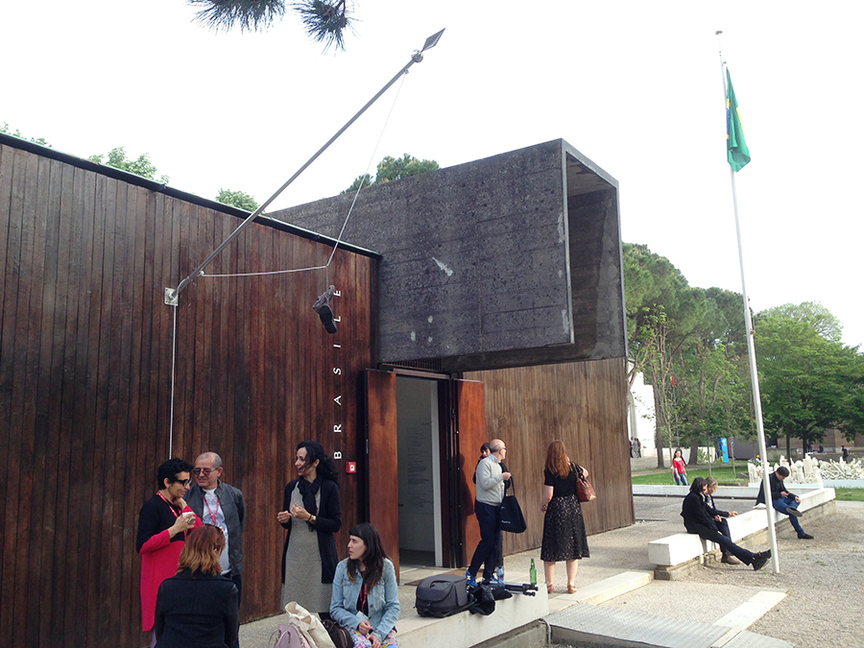
R
E
V N
E
X
T
For the 56th Venice Biennale, the national pavilions at the Giardini are, in general, of lower quality than those from recent previous editions. A certain “return to order” could be sensed, with more formalist artist-projects’ representing countries that, in previous years, had presented more ambitious and experimental proposals at Venice. This new global conservatism is perhaps less present at the Latin American pavilions in the Giardini, which, instead, are faced with their own specific issues of representation, including ties to state ideology, or “banana republic” corruption in governmental cultural policies.
Historically, Latin America’s presence at the Giardini has taken place since the mid-20th century, with Venezuela’s pavilion opening in 1954, Uruguay’s in 1960, and Brazil’s modernist gem erected in 1964. In this year’s Biennale, all three of these countries are showing projects that attest to the diversity and complexities that, in fact, differentiate the Latin American regions. As a reaction to its current political turmoil, the Brazilian pavilion presented a thoughtful group show featuring Antonio Manuel (b. 1947), Berna Reale (b. 1965) and André Komatsu (b. 1978), three artists from different generations and cities within the continent-sized country. Curated by Luiz Camillo Osorio and Cauê Alves, the exhibition emerged from a critical standpoint in reaction to the country’s current anxieties over its economic future and political leadership.
Meanwhile, Uruguay has brought an artist who decidedly deserved the pavilion: Marco Maggi (b. 1957), who is one of Uruguay’s most established artists, with tremendous international exposure during the past decade. He presents a meticulous, almost invisible intervention on all walls of the pavilion, where he traced a utopian, idealized world. Uruguay, a country with a population of 3,400,000 people, seemed to have chosen the right artist to represent its current times of reforms led by former President José Mujica’s acclaimed, new paradigms of governance.
This conscious (or unconscious) criticality was not present in the Venezuelan Pavilion, which instead presented state propaganda masked in a perverse idea of “liberty” and “freedom of expression.” Venezuela is also the only country that made the decision to display two exhibitions, rather than one project. Shown in one wing of the building is Félix Molina’s mannerist works, where indigenous iconography meets geometric abstraction—both beacons of national folklore in Venezuela. Exhibited in the other wing are the videos of Argelia Bravo that feature literal parodies to ISIS. These works present the false impression that artists in Venezuela have the liberty to express political criticism, when in fact that is only the case if their works are commenting on foreign issues (such as the Middle East), and not national policies.
Inti Guerrero is Latin American desk editor at ArtAsiaPacific.



